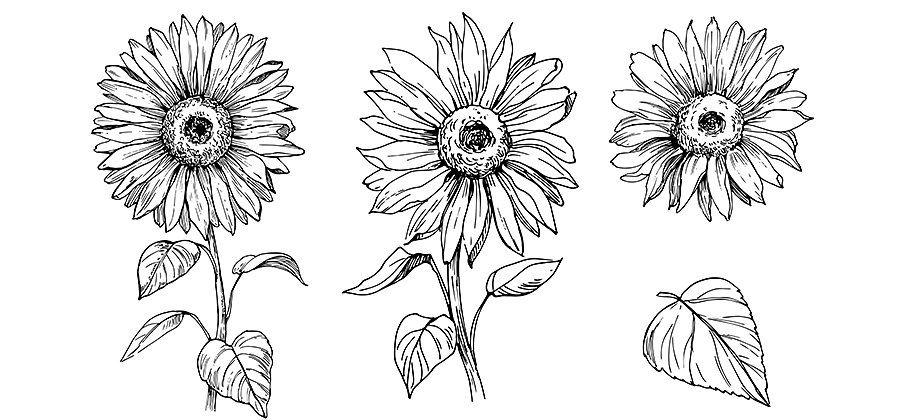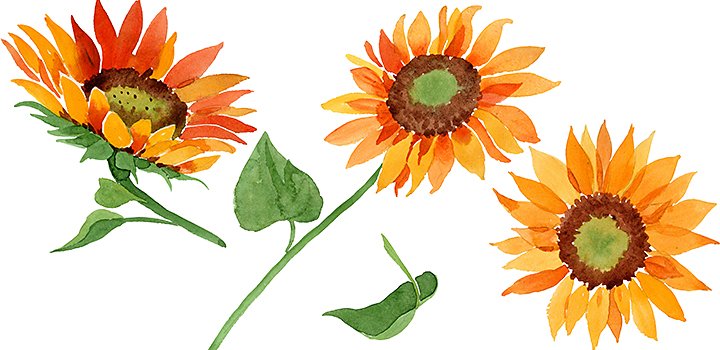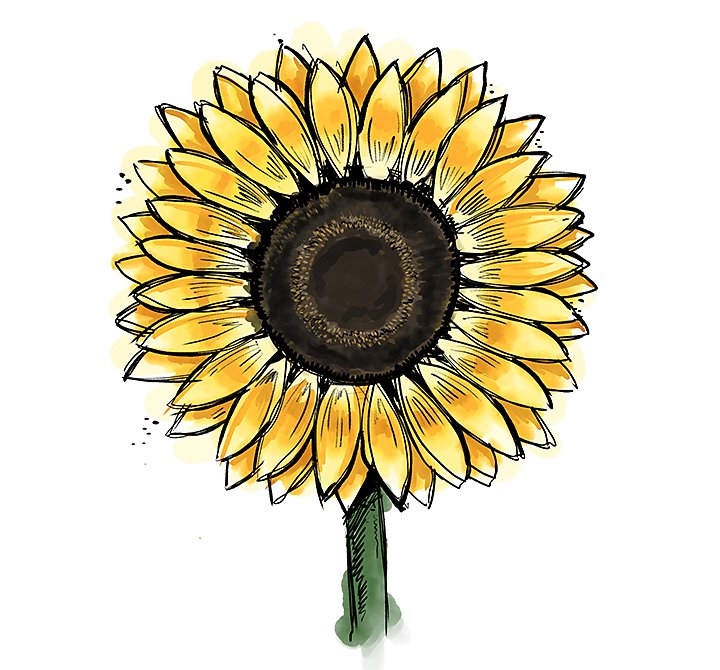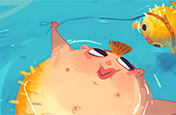How to draw sunflowers.
With these helpful tips and a step-by-step tutorial, you can create a sunflower drawing using vibrant colors and graceful lines.

Sunflowers: A special kind of flower.
With their cheerful colors and iconic shape, sunflowers are a wonderful bloom to practice your drawing with. Whether you sketch a lone stalk or a field full of color, these flowers are not only beautiful, they’re also fun to draw. There’s more to sunflowers than meets the eye.
“Sunflowers have a mathematical equation in the way that their seeds are spread out. They’re actually pretty easy to draw because they’re a simple combination of just a couple shapes,” says artist and illustrator Kevin Jay Stanton. The dark part of a sunflower’s face is a Fermat’s spiral, where the seeds spiral elegantly into the middle point. While this may sound complicated, it gives you a guide for how to draw the center of a sunflower.
“Sunflowers are also phototropic, which means they follow the movement of the sun across the sky,” explains Stanton. When the flowers are young, the face of the blooms tracks the sun from dawn to dusk. When they’re older, the flowers typically face east, to catch the morning sun. With this in mind, think about your light source before you start a drawing. Since the flower can move and rotate, that gives you plenty of angles and perspectives to practice drawing.

The anatomy of a sunflower.
“Taking the time to prepare for your drawing is just as important as the time it takes to draw,” explains illustrator Spencer Nugent. While most people know what a sunflower looks like, it’s important to take a moment to look at reference photos before you start a new drawing and think about how the different parts of the flower fit together.
- Petals: Bright yellow sunflower petals are called ray florets. Each sunflower has several layers of petals that angle out in a disk from the center of the flower.
- Flower head: One of the trickiest parts to draw is the center of the sunflower. It’s called a flower head or disk flower, and is actually made up of lots of tiny, individual flowers called florets. These little florets bloom and mature into seeds.
- Stalk: The size and height of the sunflower stalk varies between species, but the stems are generally thick, rough, and hairy. These stalks must support the heavy flower heads, so they’re often dense and strong.
- Leaves: Most sunflower leaves are broad, heart-shaped, and slightly sticky to the touch. The edges are often coarsely toothed and end in a point.
A simple step-by-step drawing tutorial.
Start at the center.
“The first thing I do is draw a circle in the middle. Don’t be too concerned about how messy the circle is at the beginning,” says Nugent. After you’ve drawn the main center of the sunflower, add a smaller circle within it. This will help you show the angle your sunflower is pointing.
“To me, a sunflower always starts with the center disk, and from there it’s just a matter of adding petals,” adds Stanton. Before you draw the petals, draw a larger circle around the main center of the flower. This will act as a guide for your petals to fit inside.

Image by Spencer Nugent
Sketch in the first layer of petals.
With your guardrails in place, add petals around the center of the sunflower. These oval-shaped petals should have a slight point at the tip and should angle out from the center of the flower. For a more realistic drawing, make the petals vary in shape and angle, and include a few with curved edges to show they’re folded or bent.
With digital tools like Adobe Fresco, you can create a more stylized drawing if you just draw several of the petals and then copy, paste, and rotate them around the rest of the flower. This will make all the petals uniform, and give you a cleaner look. If you go this route, use your eraser to clean up the edges of each petal.
Add a second layer of petals.
Once you’ve gone all around the center of the flower with the first layer, add in another. Rotate your petals so the second layer is offset from the first. With digital tools, you can use a shortcut to speed up this step. Make a copy of your first layer of petals, and then enlarge and rotate it. Go back in to erase and clean up the layers to make sure everything is blended. Now, all your petals are in place.

Image by Spencer Nugent
Create texture.
Since the center of a sunflower is actually made up of hundreds of smaller, tiny blooms, “sunflowers have a lot of texture where the center blooms have started to die off,” explains Stanton. “Each of those flowers then creates a separate seed.” If you want a simple, stylized drawing, add some crosshatching lines in concentric circles inside the center of the sunflower. Or, you can get more precise and draw the individual sunflower seeds rotating out from the center in a spiral. Take your time with this step, and keep the spiraling layout of the seeds.
Draw the stem and leaves.
Sketch in a stem for your flower, and make sure it’s not too skinny. The stalk is sturdy and thick, since it supports the weight of the flower. Sunflower stems are also rather rough and hairy, so add textured crosshatching to suggest volume and communicate light and shadow.
When the stem is in place, add in a leaf or two. Remember, the leaves are broad and pointed at the end. Check out some reference photos to understand how foreshortening will affect the shape, and add in a few thin lines and crosshatches to show the veins and lines of the leaves.
Layer in color.
With the linework done, it’s time to get colorful. With digital watercolors, “go in with a soft yellow wash around the perimeter of the flower, and work with your lighter colors first,” says Nugent. After your base color is in, you can go back and do some more work with shades and highlights. Layer in darker colors of yellow to add volume and shadow to the petals, and use browns and blacks to the center in short strokes to create more texture.

Image by Spencer Nugent
Bask in the beauty of sunflowers.
Sunflowers are a source of inspiration for all. Learn how other artists on Behance have interpreted sunflowers in their own work to give yourself a boost of creativity.
- Discover how one artist went from pencil sketch to finished painting with Fresco.
- Another creator captured realistic sunflowers at different stages of growth, bloom, and development.
- Take an illustrated approach to sunflowers like this artist, and capture unique texture and color in a new way.
- Consider more traditional mediums, like paint on paper, to achieve a detailed naturalist drawing or a whimsical watercolor painting.
Go further with Fresco.
Take your sunflower drawings to the next level by exploring the ins and outs of Fresco. With live brushes that work like physical oil paints or watercolors, you can subtly mix colors and create realistic textures. Or export your sunflower drawing and use it to create a pattern in Adobe Illustrator. Whatever tools you decide to use, try your hand at drawing this bright, cheerful flower today.
Contributors
You might also be interested in…
Try your hand at pencil sketching.
Pencil drawing is an essential first step for most artists. See how this skill can improve your art.
How to become a professional illustrator.
Get tips on portfolio creation and art presentation to help you kick off a new career.
How to draw a rose.
Improve rose drawings by learning about plant anatomy in this step-by-step guide.
How to draw birds of any feather.
Learn the basics of drawing birds digitally with this step-by-step tutorial.



